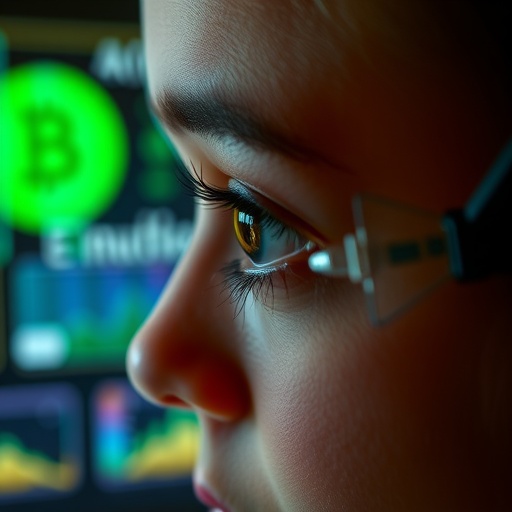Eye movements are a cornerstone of human behavior, serving essential functions—from gathering visual information to communicating non-verbally. Although eye movements are often regarded as inexpensive because they incur low metabolic costs, the operational dynamics behind them are intricate and multifaceted. Researchers have dedicated considerable attention to elucidating how these movements are modulated by the potential gains of reward or information acquisition. Yet, there exists another side to this coin that has historically received less attention: the costs associated with eye movements.
The concept of ‘costs’ in the context of eye movements encompasses a range of factors, including opportunity costs, as well as the costs linked to the planning and execution of these movements. We overlook these costs at our peril, as they fundamentally influence the decisions we make about where to look and when to move our eyes. This delicate balancing act between perceived gains and inherent costs is crucial for optimizing eye movement utility, potentially shedding light on the underlying mechanics of visual attention and cognition.
The challenge in studying these costs stems from their intangible nature. Unlike benefits, which can often be quantified through observable outcomes like task performance improvement or increased information intake, costs are often less visible. They must instead be inferred from behavioral patterns and movement data, complicating the scientific analysis of eye movement dynamics. The task of quantifying what these costs are—and how they influence decision-making processes—remains a significant area for ongoing and future research.
One observable parameter that influences eye movements is the dynamics of movement itself. Saccadic eye movements, characterized as rapid, ballistic movements that reposition the line of sight, are particularly relevant to our understanding of eye movement cost-benefit analysis. The timing and spatial trajectory of these movements are influenced by several factors, including the complexity of the visual scene and individual cognitive processing. The technical nature of understanding these dynamics adds an interesting dimension to the inquiry, with researchers needing to consider the fluid interplay between speed, accuracy, and resource allocation.
Importantly, the costs associated with eye movements do not only concern individual saccades but extend to sequences of movements as well. For example, the planning phase involves strategic decision-making that takes into account the anticipated visual returns of subsequent saccades and their overall efficiency. The cumulative effect of several eye movements must therefore be considered holistically to understand their connected costs. Taking this approach can enhance our conception of visual perception as more than just a passive receiving of information but as an active, cost-effective process.
As researchers delve deeper into this under-explored territory, various methodologies have emerged to quantify the cost of eye movements. These include technologically advanced techniques that can track eye movement with impressive precision, allowing for a detailed analysis of how we navigate our visual environments. Through the lens of advanced computational modeling, scientists are uncovering patterns and establishing correlations that elucidate how costs influence our visual searches and saccadic behavior.
Furthermore, the ecological ramifications of these findings are vast. The implications extend beyond the confines of academic research, influencing fields like ergonomics, human-computer interaction, and even marketing strategies. By understanding the costs linked to eye movements, tech companies can develop tools and interfaces that align more closely with natural user behavior, therefore enhancing user experience and engagement. This understanding is pivotal not only for improving technology but also for optimizing real-world environments for better visual accessibility.
However, while advanced technologies and methodological innovations provide valuable insights, they also come with their own set of challenges. One hurdle is ensuring that the findings derived from controlled lab environments translate effectively to everyday settings, where distractions and environmental variability can significantly impact eye movement patterns. As such discrepancies may arise, researchers are tasked with devising ways to bridge the gap between laboratory findings and real-world applications.
The discussion surrounding the costs of eye movements also opens the door to questions about neurophysiology. What are the neurobiological mechanisms that enable the brain to weigh gains against costs? The study of eye movement economics may eventually intersect with insights gained from neuroimaging and electrophysiology, offering a multi-dimensional understanding of the integrated systems at play.
Moreover, factors like individual differences come into play. For example, people may have varying strategies for managing the costs of eye movements based on personal experiences or cognitive styles. Future research must explore these individual variances, providing a more nuanced understanding of how costs influence eye movements across different populations and settings. Such investigations may lead to tailored strategies for interventions and training programs aimed at enhancing visual attention and efficiency.
As research on this topic progresses, it is anticipated that the insights gleaned will not only advance academic discourse but also catalyze practical applications that can enhance daily life, from informed driving to more effective educational methods. The interplay of costs and gains in eye movement control affects how we engage with our world, thus emphasizing the importance of a well-rounded approach to this seemingly simple but fundamentally complex aspect of human behavior.
In conclusion, while eye movements may initially appear to be low-cost actions, they are rife with hidden complexities and costs that merit comprehensive exploration. This growing field of research serves as a reminder that even the most seemingly trivial movements are influenced by a range of factors, each contributing to the rich tapestry of human cognition and behavior. As we continue to peel back the layers surrounding the costs of eye movements, we can anticipate a future where our understanding of vision is not only deeper but also more applicable to the myriad challenges we face in effectively interacting with our visual environment.
Subject of Research: Costs of Eye Movements
Article Title: A Review of the Costs of Eye Movements
Article References:
Schütz, A.C., Stewart, E.E.M. A review of the costs of eye movements.
Nat Rev Psychol 4, 625–638 (2025). https://doi.org/10.1038/s44159-025-00481-7
Image Credits: AI Generated
DOI:
Keywords: Eye Movements, Saccades, Costs and Benefits, Visual Perception, Cognitive Processing, Neurophysiology.




